June is a month of abundance for foragers with country hedgerows and fields brimming with free wild food. Here is our expert guide on the best foods to forage for in June in the UK, with a few key details regarding where each plant can be found, characteristics and recipe ideas, plus how to forage responsibly.
What is foraging?
Foraging is the activity of finding, gathering and harvesting wild foods – for free. It’s a great way to stay active and spend time outdoors connecting with nature and learn more about where your food comes from.
There is a wide variety of food you can forage for in Britain, including nuts, seeds, fruits, vegetables and more.
Where to forage in June
Woodlands, hedgerows and the shoreline are good places to start your foray into foraging. However, you may discover local parks and even your garden provide foraging hotspots.

How to forage responsibly and safely
It is vital to avoid damaging wildlife habitats or rare species, so check you are allowed to forage in the area before starting to pick. When foraging, ensure you leave plenty behind for wildlife and only pick from an area with a plentiful supply. Only take what you plan to eat and take care to avoid damaging the roots of plants as you pick.
Take a good field guide with you and always be sure you can positively identify any plant before you pick it, and never eat any plant you are unsure of. Taking part in a foraging course with an expert is a good way to learn how to forage safely and responsibly.
Best plants to forage for in June
Sweet Cicely, Myrrhis odorata
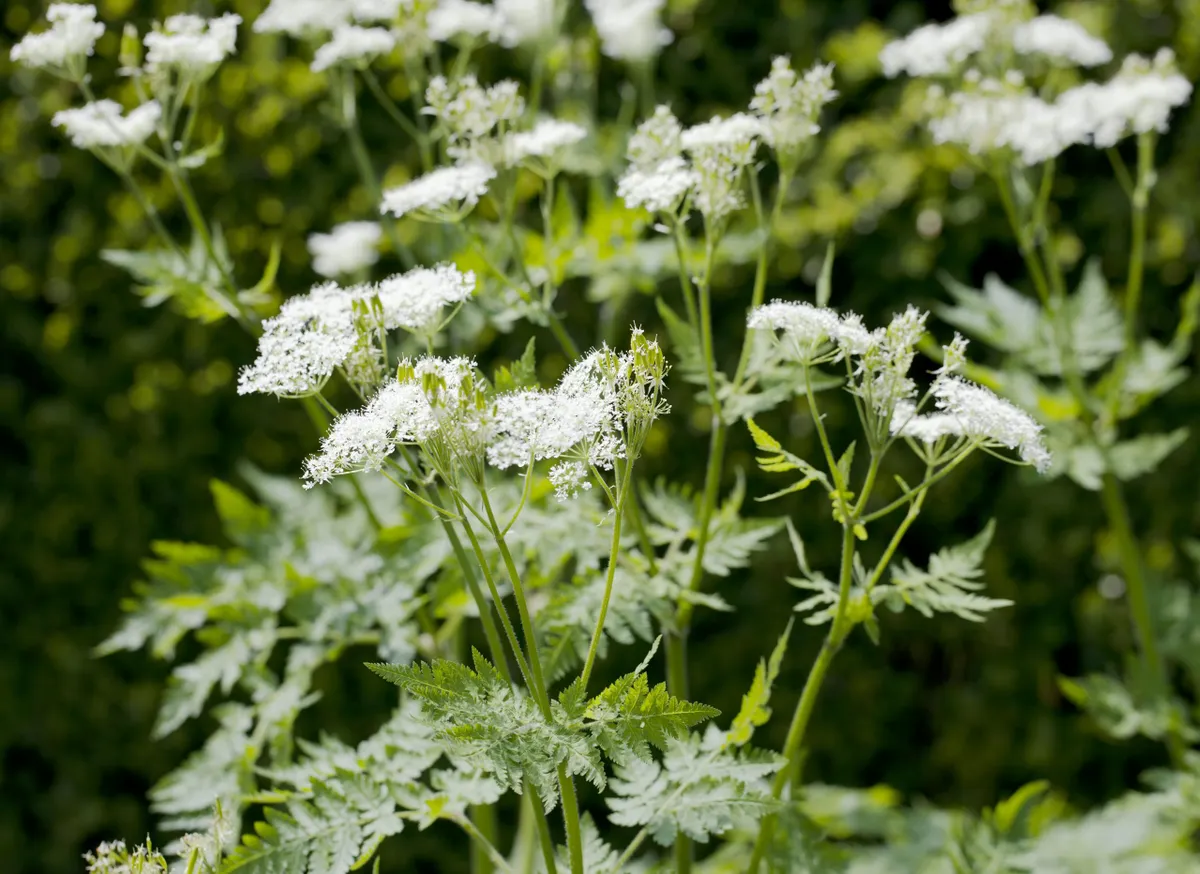
This herbaceous perennial plant is similar to cow parsley and an excellent accompaniment to rhubarb. It has a sweet taste that is good for diabetics as it doesn't actually contain sugar. The leaves are fern-like and feathery and can grow up to 50cm long, with creamy white flowers produced in large clumbs. Commonly found in the North of England and Scotland, be careful when picking sweet cicily, as it can be confused for deadly hemlock. Check it's cicily by crushing a little in your hand - it should smell strongly of aniseed.
Read this: Umbellifer guide: common UK species and how to identify them
Make sure you can tell the difference between deadly hemlock and its harmless cousins with our guide to the UK's umbellifers
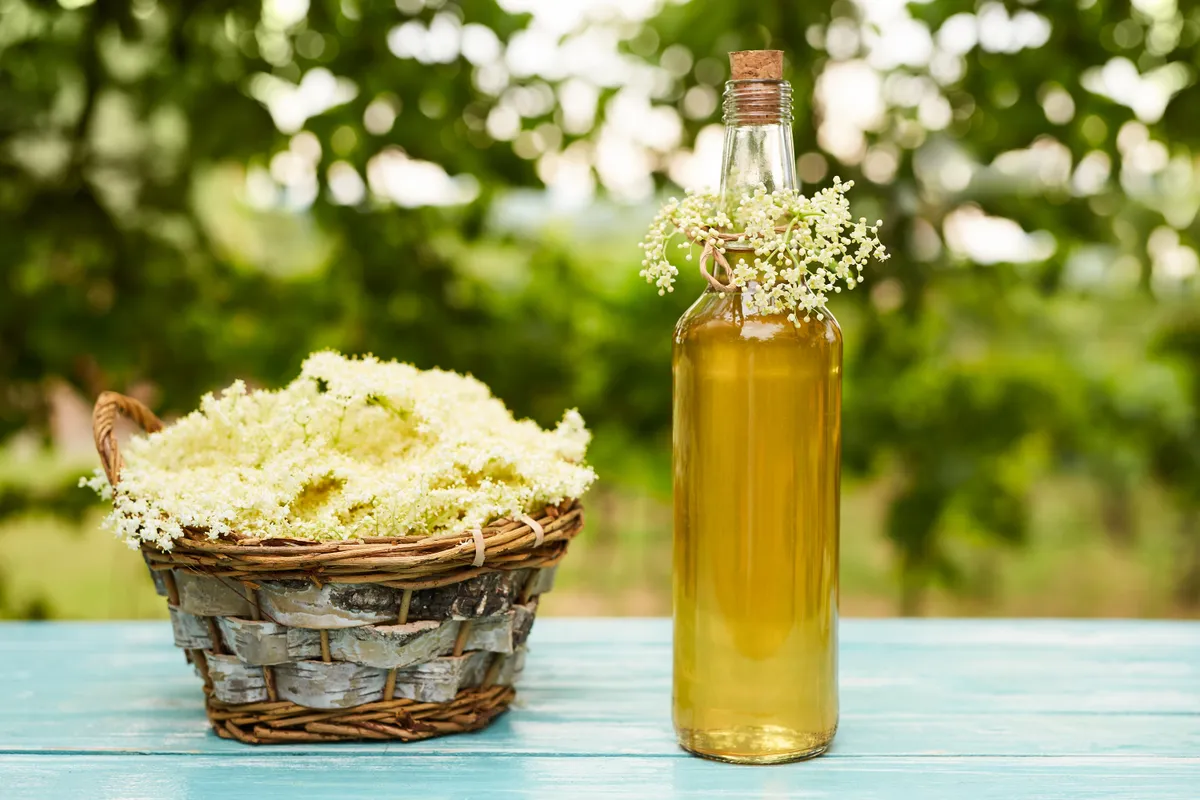
Shepherd’s Purse, Capsella bursa-pastoris

Parts used: leaves and flowers
The heart-shaped seed of Shepherd’s Purse is the most noticeable part of this plant. The leaves form a basal rosette with a long flower stalk. The flowers, forming before the seed pods, are small, white and have four petals. Both the flowers and leaves can be cooked or eaten raw and the seed pods could be used to add a little crunch to your salad. Nutritionally, it contains Vitamin A, C and K, manganese and calcium. This plant is also used medicinally, under guidance of medical herbalists, for its astringent properties, meaning it helps tighten and tone the cells, good for conditions involving haemorrhages, heavy menstrual flow or other types of excessive bleeding.
Chickweed, Stellaria media
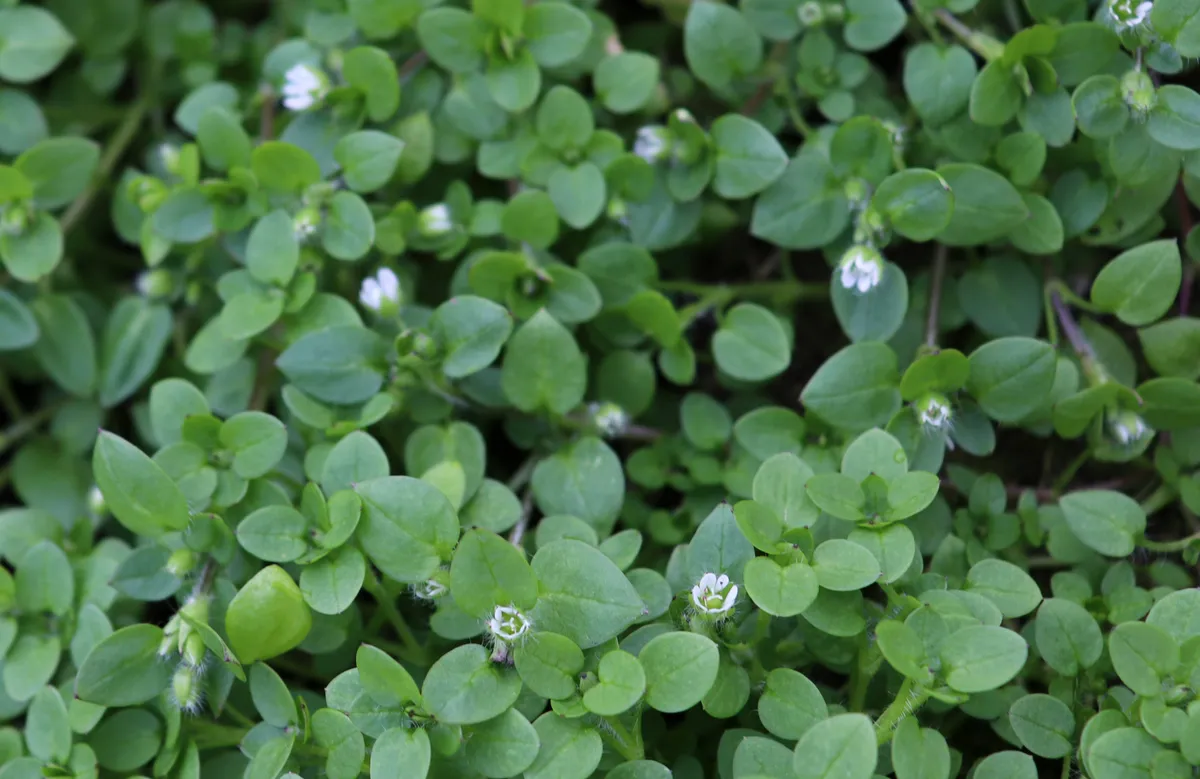
Very hardy and often considered a weed, chickweed is actually a healthy plant to eat and has many medicinal and cleansing properties. It is full of vitamins and minerals and makes a great addition to salads or as a base for pesto. Chickweed grows almost everywhere and can be identified by its small, white, star-like flowers and its unique intertwined manner of growing.
Where to find it: gardens, parks and woodlands
Elderflower, Sambucus nigra
Parts used: flowers and berries (autumn)
Elderflower is widely used as a base for elderflower cordial, and it's easily to pick the flowers and make your own, which often tastes much better than the supermarket alternative. Elder is common and is identified by its creamy white little flowers and sweet smell. The species name ‘nigra’ refers to the beautiful, deep, dark purple berries that form on this bush in the autumn, but this month the flowers fill the air with a light floral fragrance.
The flowers break from the stem to form delicate clusters and the tiny, cream petals surround small anthers with yellow pollen dusted on top - it’s this yellow pollen that gives the fragrance. The leaves are serrated on the edge and usually found in clusters of five. Make sure that you pick the flowers from a substantial woody-stemmed plant so not to get confused with other white flowered plants that grow in spring.
Rinse flowers briefly in cold water before using them fresh in cordials, syrups or jellies. Be sure of your identification before harvesting this season and ensure you never take more than a quarter of what you see.
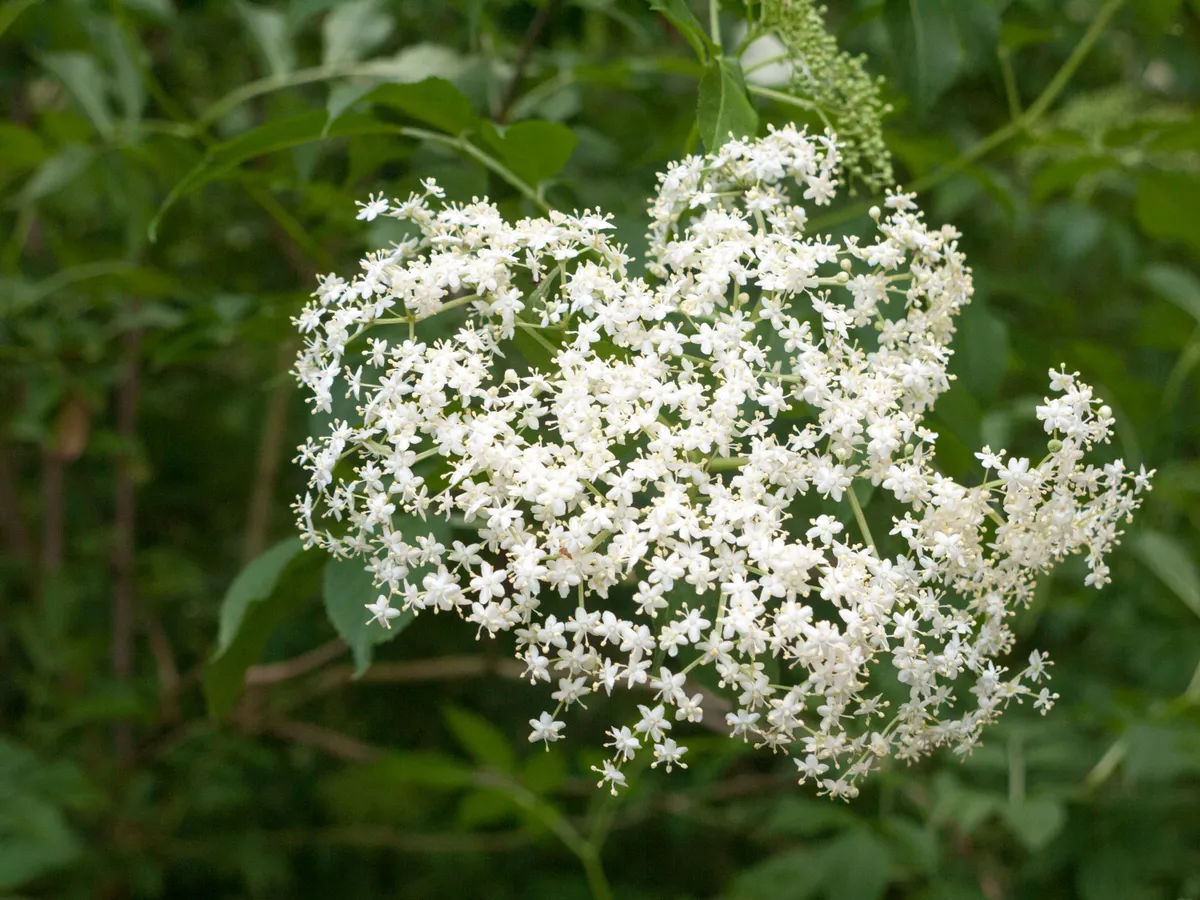
Where to find it: countryside, parks, gardens and hedgerows
Elderflower guide: where to find it, how to identify and recipe ideas
Lacy white elderflower heads dot the emerald hedgerows of Britain at this time of the year. Our expert guide on how to identify elderflower, where to find it and delicious recipes to make.
St John’s Wort, Hypercium preforatum

Parts used: flowers
The overall growth and appearance of the plant resembles the non-edible Ragwort so always check your identification before using it in any way.
Named because of its timely emergence, this plant flourishes around the festival of St John the Baptist in late June. The flowers form small, yellow clusters at the end of branches. One of the best ways to identify it is to squeeze the petals between your fingers -- they will ooze a deep crimson wine-coloured liquid. This is really fascinating to watch! This herb is famous for healing bruises and bumps. You can make an infused oil for the skin by submerging the flowers in an oil of your choice, leaving this in a warm place for four weeks before straining. Once strained, store in a cool, dark place and use as a first aid oil for bruises and bumps.
Linden, Tilia species

Parts used: flowers
The flowers of this very common tree, which often lines parks and roads, have been used for centuries as a treatment for anxiety, digestive problems and insomnia. Its calming properties make it an ideal ingredient for homemade teas to drink before bedtime. The young leaves are ideal mixed into salads and the fruit is best dried and baked into cakes and breads. The tree can be easily identified by the many ‘suckers’ that sit at the base of the trunk.
The leaves are heart-shaped and often asymmetrical and the delicate, scented flowers are easy to harvest as many of the branches hang low to the ground. The yellow-white flowers hang from thin stalks, have five petals and are attached to a pale green-yellow bract. The flowers create an uplifting, sweet tea that can gently ease tensions of the heart.
To make Linden blossom tea place a handful of fresh Linden blossom or one teaspoon of dried flowers in a cup of boiling water and leave to steep for 15mins before drinking.
Where to find it: parks and roadsides
White mustard, Sinapis alba
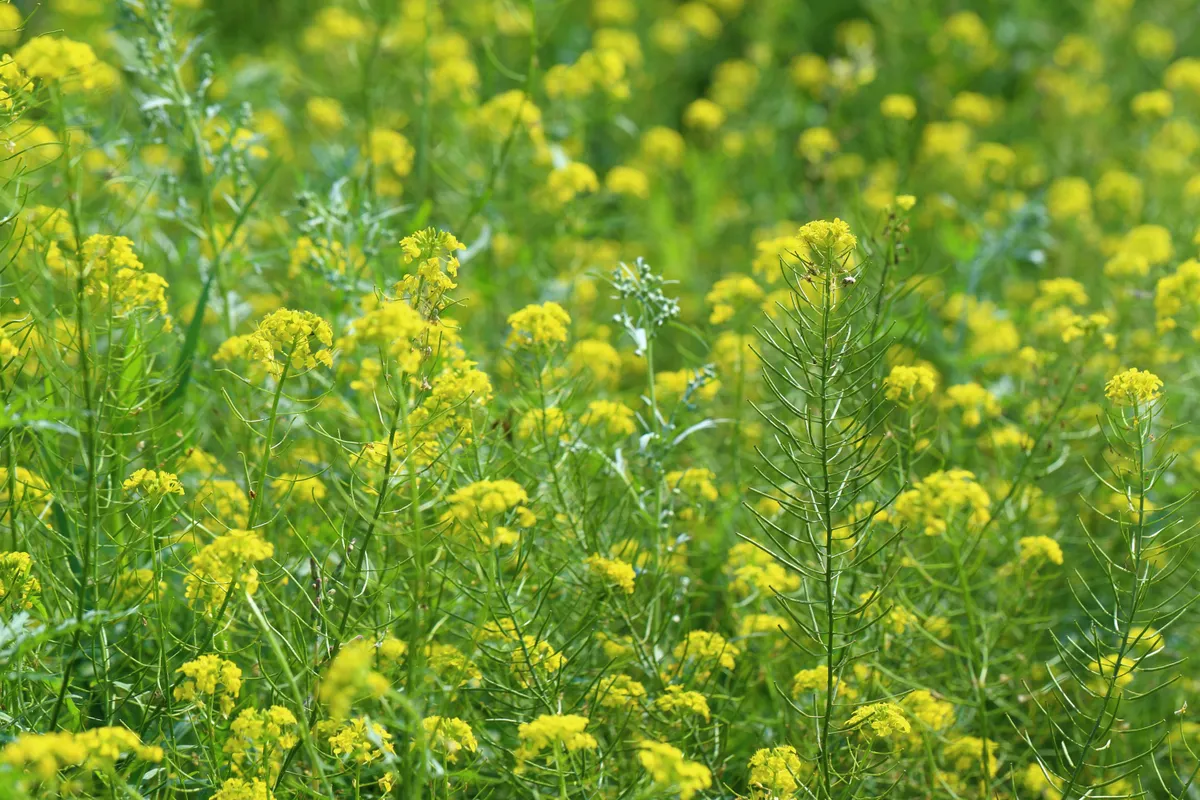
The seeds of the white mustard plant can be used whole for pickling or toasted to be used in dishes in the same way as shop-bought mustard seeds, as when they are ground they are the main ingredient in typical English mustard. The tall plant can be identified by its bright yellow flowers and stalkless pinnate leaves.
Where to find it: fields and road verges
Rose, Rosa canina, Rosa arvensis
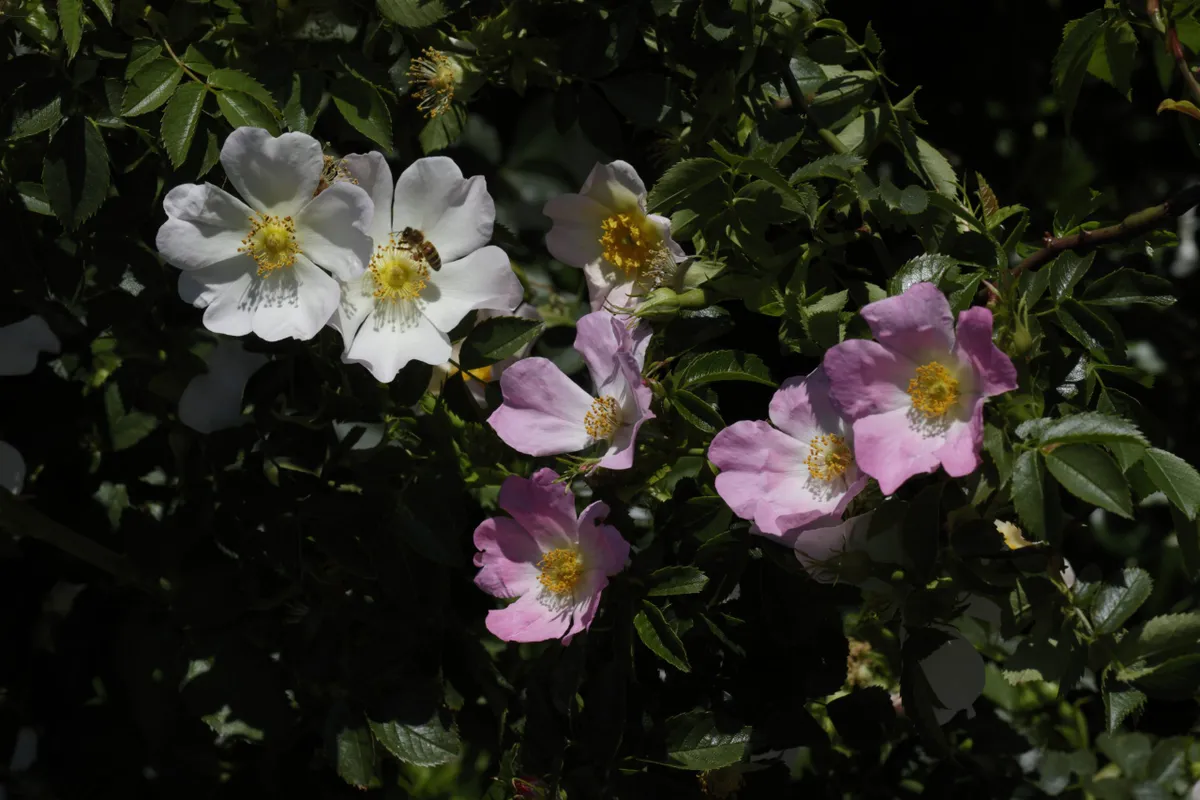
Parts used: flowers
The beautiful wild rose can be seen flowering in our gardens and along hedgerows in the summer months. Both dog rose and field rose leaves are dark green and pinnate and both species grow by scrambling up their surroundings. Rosa canina (dog rose) grows in hedges with curved thorns and pink flowers that often display five petals and have a yellow centre. Rosa arvensis (field rose) looks similar but the petals are slightly smaller and white, forming more of a circular flower shape. Pick the flowers as they are in full bloom on a sunny day and use them fresh in a heart-opening tea or salad, or dry them to use later in a relaxing bath salt mix.
Sea kale, Crambe maritima
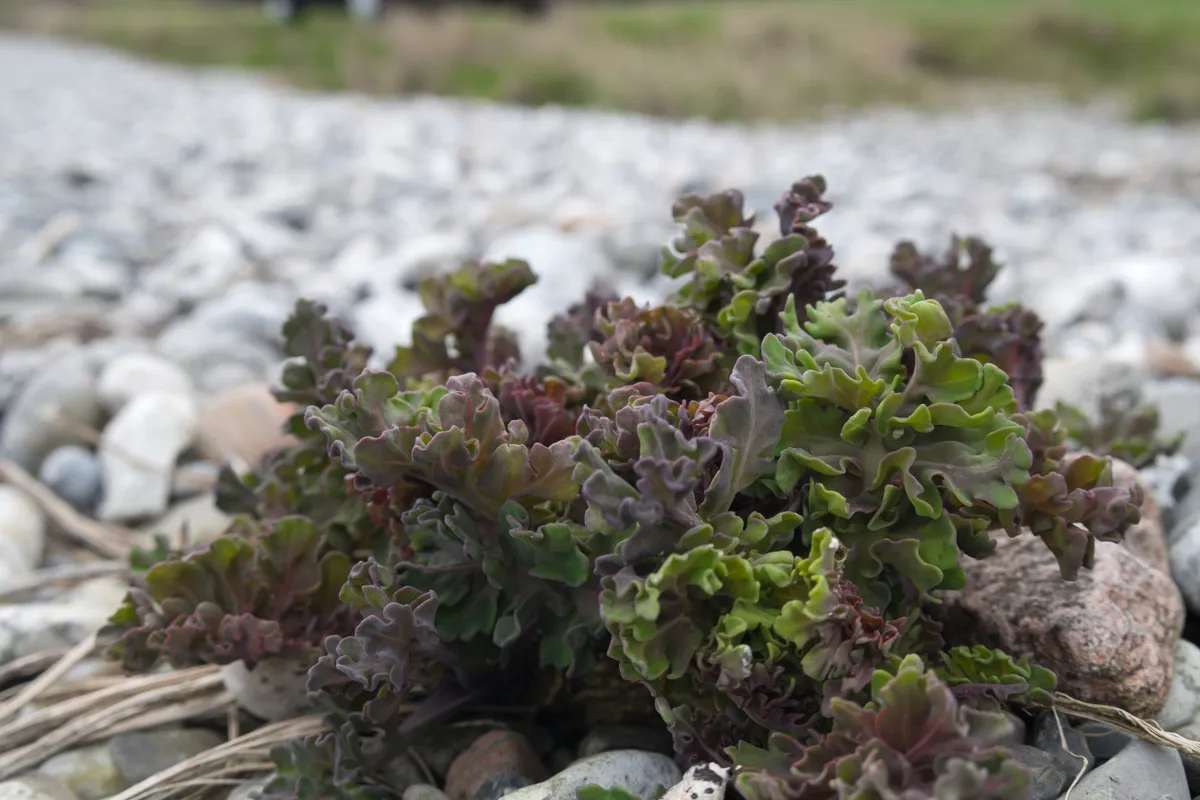
At this time of year the leaves of the sea kale plant can be cooked just like ordinary kale. Sea kale used to be a Victorian favourite that fell out of fashion in the later 1900s but has grown in popularity in the past couple of years. This super healthy plant grows naturally on the edge of shingle beaches and can be identified by its large, divided leaves that are very similar to ordinary kale, and by its small, fragrant white flowers.
Where to find it: along the coastline
